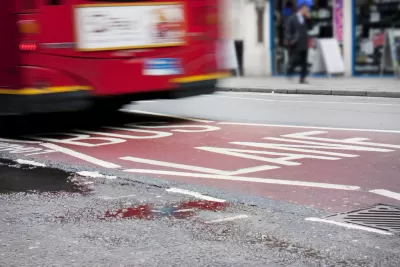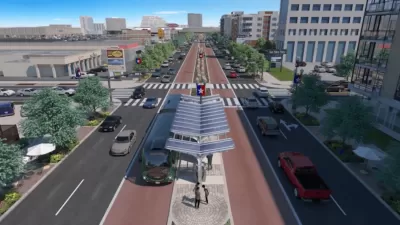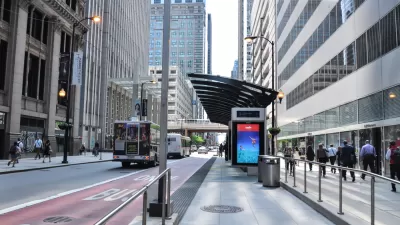Painting red dedicated bus lanes can improve travel times for bus riders, encourage more people to use public transit, and reduce emissions from transportation.

Writing in The Urbanist, Ryan DiRaimo calls on the city of Seattle to install dedicated bus lanes for all of its bus lines, citing evidence of reduced emissions and shorter bus commute times on streets that have done so.
According to DiRaimo, “The problem afflicting many of Seattle’s dedicated bus lanes is that they disappear right when they’re needed most at congested intersections or are clogged with too many cheating motorists. Deploying dedicated bus lanes widely and then enforcing them would fix that, however.”
DiRaimo writes that Seattle doesn’t need drawn-out public meetings to decide the issue. Painting bus lanes, cheaply and quickly, would definitively help the environment, eliminating the need for a SEPA review. When it comes to traffic, DiRaimo notes, “Well, traffic is constant. Traffic was here before the dedicated bus lanes, and it’s there today. Traffic existed before I-5 and I’m sure we are all aware it has never left. Traffic is a gas, not a liquid. You don’t control the flow by changing the size of the pipe, the gas fills up whatever space you give it.”
For DiRaimo, painting dedicated bus lanes is a no-brainer: “cheap, easy and smart.” DiiRaimo concludes, “The cost of paint is less than the cost of Seattle’s deadly year on the roads. This idea isn’t even that bold. It just makes sense.”
FULL STORY: Add Dedicated Bus Lanes for Every Route

Planetizen Federal Action Tracker
A weekly monitor of how Trump’s orders and actions are impacting planners and planning in America.

Restaurant Patios Were a Pandemic Win — Why Were They so Hard to Keep?
Social distancing requirements and changes in travel patterns prompted cities to pilot new uses for street and sidewalk space. Then it got complicated.

Map: Where Senate Republicans Want to Sell Your Public Lands
For public land advocates, the Senate Republicans’ proposal to sell millions of acres of public land in the West is “the biggest fight of their careers.”

Maui's Vacation Rental Debate Turns Ugly
Verbal attacks, misinformation campaigns and fistfights plague a high-stakes debate to convert thousands of vacation rentals into long-term housing.

San Francisco Suspends Traffic Calming Amidst Record Deaths
Citing “a challenging fiscal landscape,” the city will cease the program on the heels of 42 traffic deaths, including 24 pedestrians.

California Homeless Arrests, Citations Spike After Ruling
An investigation reveals that anti-homeless actions increased up to 500% after Grants Pass v. Johnson — even in cities claiming no policy change.
Urban Design for Planners 1: Software Tools
This six-course series explores essential urban design concepts using open source software and equips planners with the tools they need to participate fully in the urban design process.
Planning for Universal Design
Learn the tools for implementing Universal Design in planning regulations.
Heyer Gruel & Associates PA
JM Goldson LLC
Custer County Colorado
City of Camden Redevelopment Agency
City of Astoria
Transportation Research & Education Center (TREC) at Portland State University
Camden Redevelopment Agency
City of Claremont
Municipality of Princeton (NJ)





























